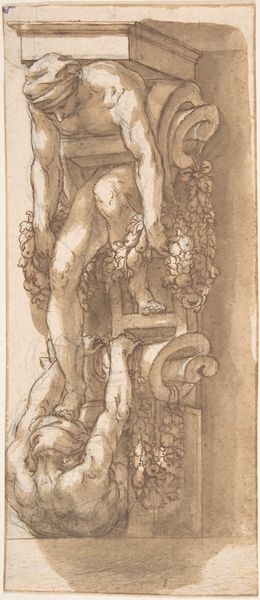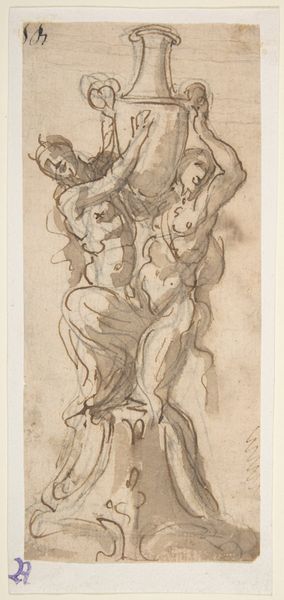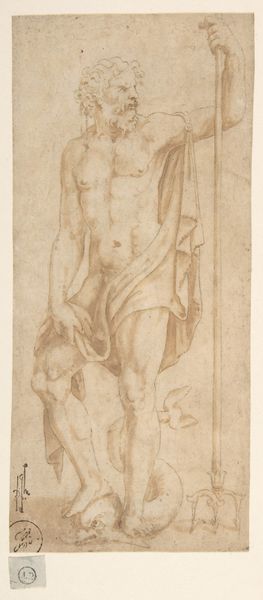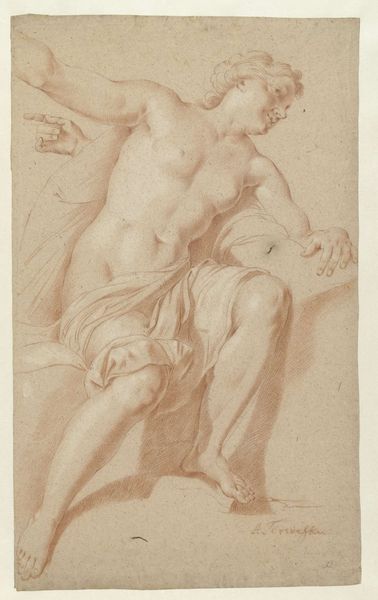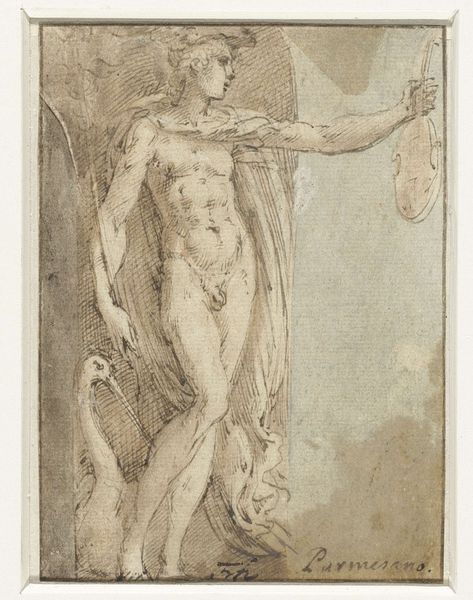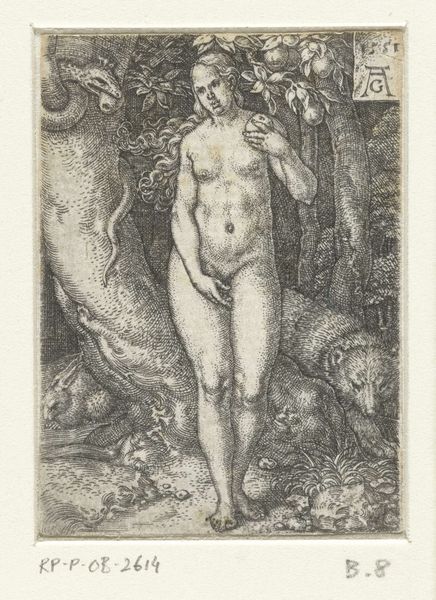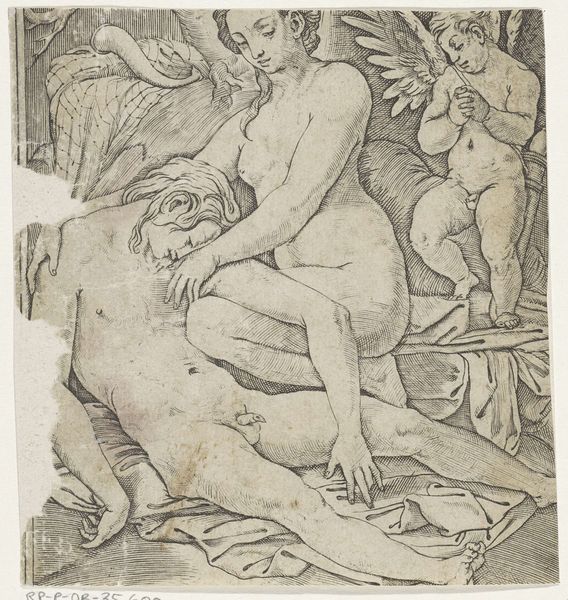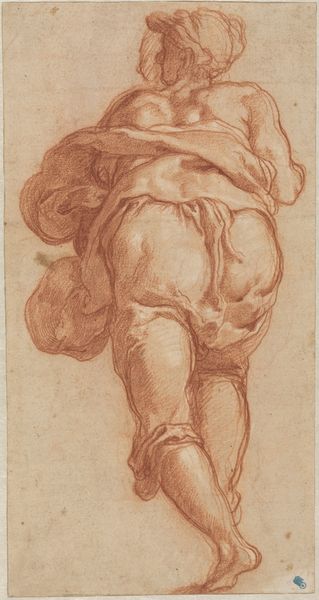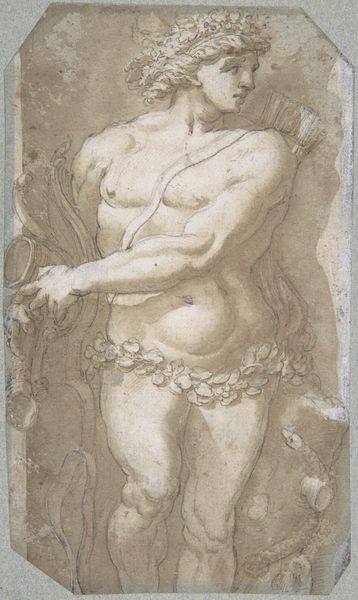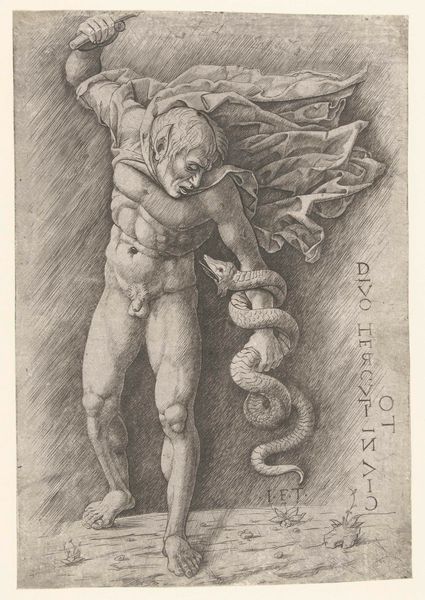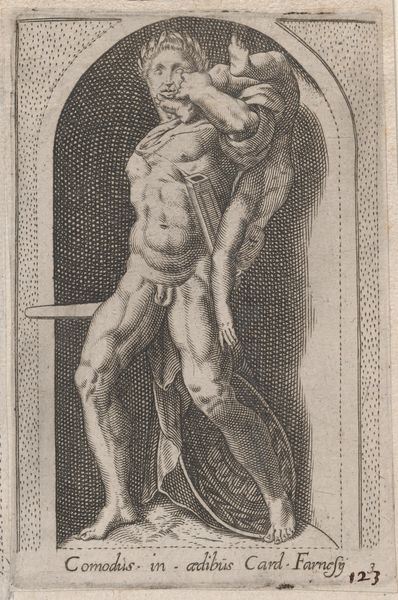
drawing, charcoal
#
drawing
#
charcoal drawing
#
figuration
#
11_renaissance
#
charcoal
#
history-painting
#
italian-renaissance
#
nude
Dimensions: height 257 mm, width 150 mm
Copyright: Rijks Museum: Open Domain
Curator: This charcoal drawing is "Hermaphroditus as Caryatid," created by Giulio Romano around 1510 to 1521, now residing here at the Rijksmuseum. It strikes me immediately. Editor: It looks rather unsettling. Is it the stark lighting and the figure's ambiguous pose? It projects a curious sense of vulnerability, despite the classical allusion and defined musculature. Curator: Let's unpack those allusions. The figure is Hermaphroditus, son of Hermes and Aphrodite, and as the title indicates, Romano imagines the figure serving as a caryatid—a sculpted female figure serving as an architectural support. Notice how this speaks to the material function even in the drawing's fantasy? Editor: Precisely. And how the very act of rendering in charcoal on paper emphasizes materiality. Consider the labor: grinding the charcoal, the repetitive strokes building tone and volume. Each mark a physical assertion. There is a tactile intimacy at play despite it only being a drawing of something grand like a Caryatid. The consumption of artist’s materials like paper in this period also raises interesting questions around how art becomes embedded in society. Curator: Absolutely, it prompts reflection on gender roles too. Caryatids, historically women under the burden of architectural structures, get flipped in this version. How the myth of Hermaphroditus merges gender identity creates fascinating tensions with traditional burdens placed upon the female body. There is a queer power embedded in Romano's depiction. Editor: It does offer layers upon layers, particularly within its Renaissance context. To present such a layered and non-normative vision invites inquiries regarding gendered and classed relationships of labor in the workshops that likely fostered Romano’s creativity. We can see those relationships embedded, like ghosts in this drawing. Curator: You’ve made me consider labor in an entirely new light! A lot to reflect on even with just a single drawing and what stories its construction evokes. Editor: Indeed! It's the dialogue between materiality, imagery, and its historical moment that sparks the most productive conversation.
Comments
No comments
Be the first to comment and join the conversation on the ultimate creative platform.
